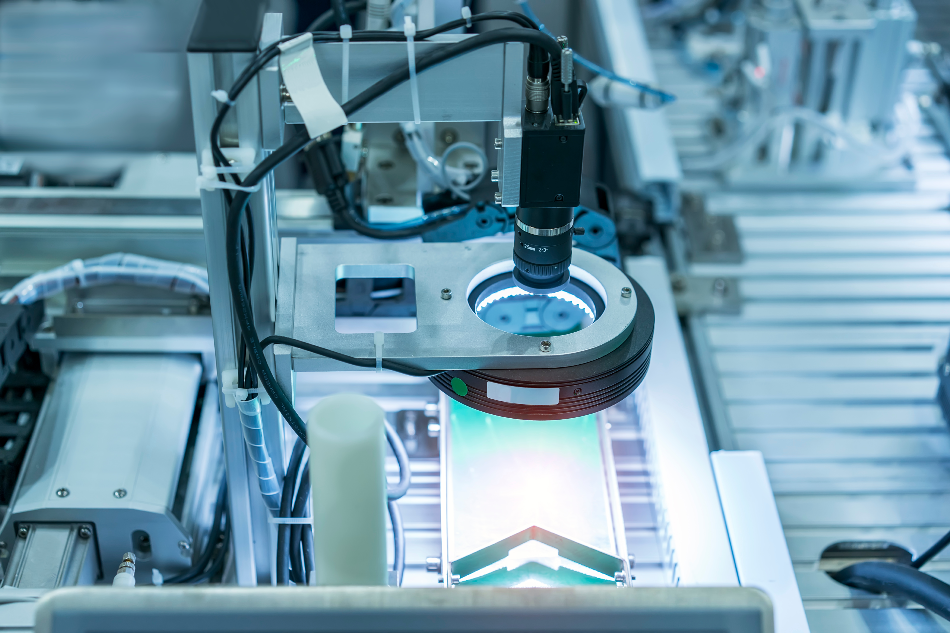Article Updated on 25 November 2020

AAAasharkyu / Shutterstock
Vision sensors can be integrated into a number of industrial processes in order to automate them, removing the reliance on human workers and improving the consistency in quality of completed work. Vision sensors can be used to automate tasks such as data collection, machine monitoring, quality assurance, real-time process control, robot/machine guidance, sorting/counting, and test & collaboration.
Use of Vision Sensors in Modern Industrial Practices
Vision sensors are being embraced by modern industrial practices, incorporating them with robotics to automate tasks that previously would have been completed by a human workforce. The benefits of this are plentiful, from enhancing productivity and reducing costs, to improving quality and even improving employee health as well as career prospects. We discuss how vision sensors are used to improve industrial automation in-depth below and consider how they benefit industrial practices.
Tasks that involve inspection, such as quality assurance, sorting/counting, or anything requiring identification, are well suited to be carried out by vision sensors in favor of a human workforce. This is because these sorts of tasks can be repetitive and tiring to a human, making them prone to errors as well as becoming increasingly inefficient over time.
A robot with vision sensors, on the other hand, will not tire. Vision sensors can be used to inspect objects for unique features, which can help in quality assurance, product location, and identification and, counting. These tasks can be completed much faster and with greater precision than humans can accomplish, as errors are reduced and compliance is facilitated.
As robots with vision sensors able to take over repetitive tasks, human workers can be redeployed to other areas where their skills are of greater use. This can reduce the damage to workers’ health, for example, it can protect them from tasks that cause repetitive strain injury, and it can also indirectly encourage the growth of skills in other areas, helping to motivate and develop the workforce.
Vision Sensors Can Improve Industrial Automation Processes
Transportation of parts can also be automated through the use of vision sensors. Robots can use visual feedback to navigate through a dynamic environment. Vision sensors can provide robots with the necessary information to analyze and interpret the floor within a scene, allowing it to traverse safely and efficiently, carrying parts to the necessary locations. This reduces wait times for parts, boosts productivity and efficiency, and reduces the need for workers to carry products or drive vehicles to transport goods.
In addition to delivering items to their correct places, vision sensors can be used to help automate assembly processes. While the technology is still being developed to fully realize its potential, scientists are confident that vision sensors will be successfully integrated with robotic systems to allow them to not only pick and pack, which they can currently manage but to enable them to carry out more complex assembly tasks without the aid of a human worker. To do this, vision sensors will be used to identify parts, and to relay data on the manipulation of the part in space, such as its rotation, and distance from the target assembly area (where it needs to be fixed to).
Conclusion
For many industrial processes, vision sensors offer a means to automate it, while not only improving the process through boosting efficiency and output quality but through cutting costs. The software used to power vision sensors often requires no programming, and most can be easily integrated into larger systems, allowing data from other sensors to be integrated and processed. This system is cheap and cost-effective, and can be adjusted to carry out a number of tasks, the limits of which we are yet to see.
In the near future, we can expect to see further adaptations of vision sensors in industrial processes, many of which will give the benefit of automating these systems, improving them, and cutting costs.
Source
Disclaimer: The views expressed here are those of the author expressed in their private capacity and do not necessarily represent the views of AZoM.com Limited T/A AZoNetwork the owner and operator of this website. This disclaimer forms part of the Terms and conditions of use of this website.